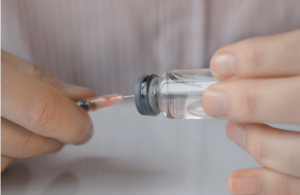When injecting medication, there are three important numbers you need to understand to make sure you’re injecting the right dose. Let’s go over each one and see how they work together:
1. Units on the Syringe (How You Measure Your Dose)
• The syringe has units marked on it (like 10, 20, 30 units).
• These units tell you how much medication you’re pulling up into the syringe.
• For example, if your doctor tells you to inject 30 units, you need to pull the plunger to the 30-unit mark.
Common Mistake: Patients confuse units with mL (milliliters). Units are a way to measure the medication dose, not the liquid volume.
2. Dosage of the Medication (How Much You Need To Take)
• Your prescription tells you how many units to inject.
• For example, your doctor might prescribe 30 units of medication per injection.
Always double-check the prescribed dose and match it to the units on your syringe.
*Common Mistake: Patients sometimes inject more or less than prescribed because they don’t know the exact unit amount they’re supposed to pull up.
3. Volume of the Vial (How Much Liquid is in the Bottle)
• The vial label shows how much medication is in the bottle in mL (milliliters).
• For example, a vial might say 10 mL of medication.
But don’t worry too much about the mL amount in the vial. What’s more important is the unit amount you need to inject.
*Common Mistake: Some patients try to convert mL into units, which is unnecessary and confusing. Stick with the unit of measurement on your syringe.
Quick Guide

Key Tips to Avoid Mistakes:
1. Always follow the unit dosage prescribed by your doctor.
2. Use the right syringe type (U-100 or U-40) based on your medication.
3. Don’t worry about the vial, just focus on units.

















